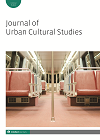
Full text loading...

This article examines the representation of walking and the narrativization of borders in Troubles-era Belfast in Anna Burns’s 2018 novel Milkman. I argue that the protagonist, Middle Sister, develops her own narrative form and walking method as ‘tactics’ to challenge the city’s imposed sectarian geographies and as a response to navigating a city of intense surveillance. In her narrativization, Middle Sister replaces place references with her own complex naming system and lexicon and negotiates urban space by ‘reading-while-walking’. As a result, Middle Sister attempts to dislocate the political nature of the conflict by mediating Belfast on her own terms and asserting her own spatial practices. However, as I demonstrate in the final section in conversation with trauma theory, there are limitations to Middle Sister’s walking practice, which is disrupted by the urban hauntings of her troubled city, triggering particular psychosomatic responses and traumatic memories.

Article metrics loading...

Full text loading...
References


Publication Date:
https://doi.org/10.1386/jucs_00054_1 Published content will be available immediately after check-out or when it is released in case of a pre-order. Please make sure to be logged in to see all available purchase options.